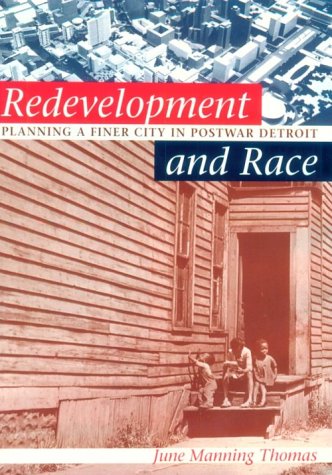Creating the North American Landscape
1 total work
In the decades following World War II, professional city planners in Detroit made a concerted effort to halt the city's physical and economic decline. Their successes included an award-winning master plan, a number of laudable redevelopment projects, and exemplary planning leadership in the city and the nation. Yet in those same decades, Detroit was transformed from a city which enjoyed liveable neighbourhoods, healthy commercial strips, a bustling downtown and beautiful parks into the notorious symbol of urban decay that it is today. In "Redevelopment and Race", June Manning Thomas shows what went wrong. She demonstrates how and why government programmes were ineffective and even destructive to community needs - and how social striving and class disunity added a further difficulty to their implementation. Examining the city she knew first as an undergraduate student at Michigan State University and later as a scholar and planner, Thomas argues for a different approach to traditional planning - one that places social justice, equity and community ahead of purely physical and economic objectives.
A unique historical analysis of the interaction of redevelopment and racial issues in one city, this book offers an important contribution to both planning history and urban studies. Thomas's thoughtful solutions offer hope to citizens and government agencies alike who struggle every day with redevelopment issues in America's older industrial cities.
A unique historical analysis of the interaction of redevelopment and racial issues in one city, this book offers an important contribution to both planning history and urban studies. Thomas's thoughtful solutions offer hope to citizens and government agencies alike who struggle every day with redevelopment issues in America's older industrial cities.
